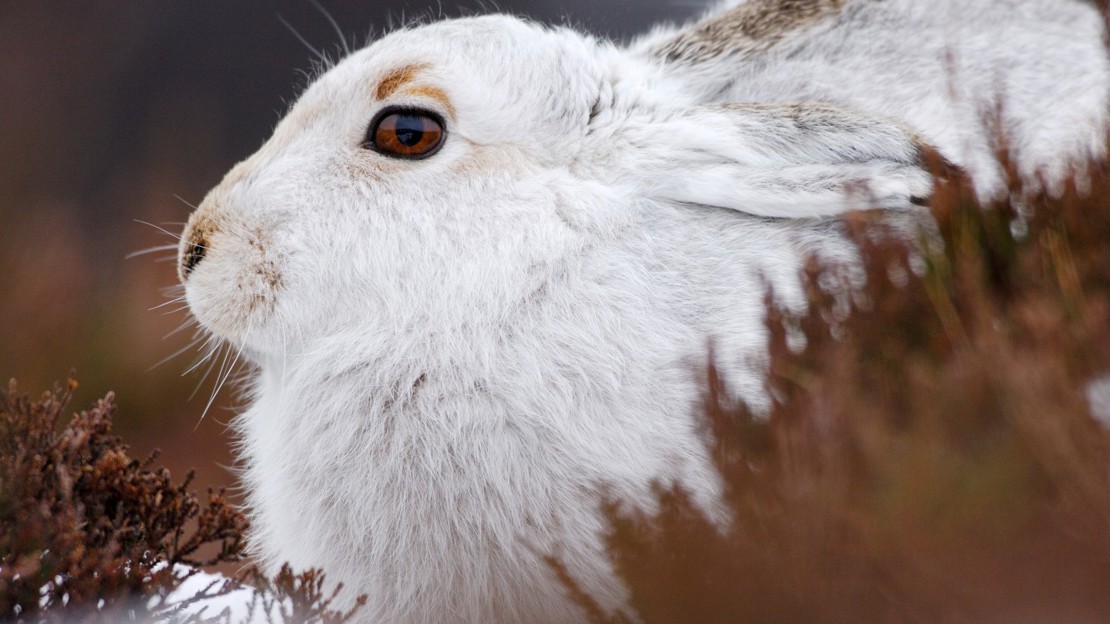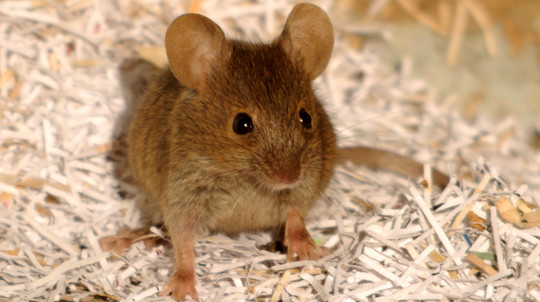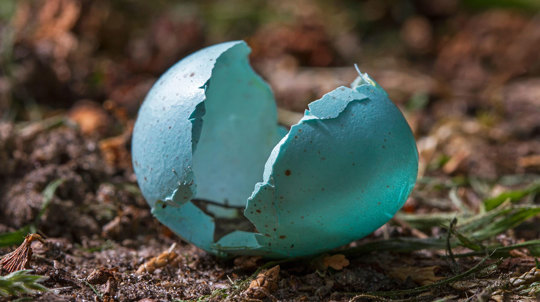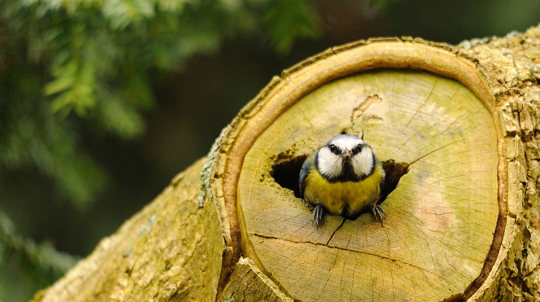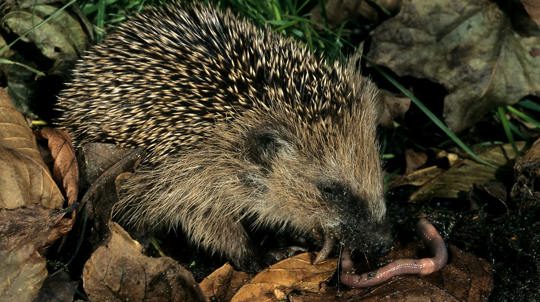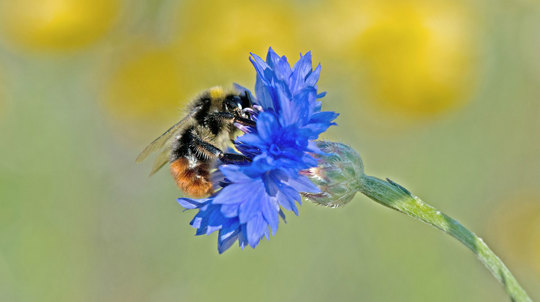Brown hares can reach speeds of up to 40 miles per hour at full throttle.
Why do hares box? And other hare facts

Content manager, botanist and tree lover
With long ears, long legs and an even longer stride, the brown hare is Britain’s fastest land mammal. Elusive and somewhat endearing, hares live quite a different life to that of their rabbit relatives, from their sleeping arrangements to their breeding habits.
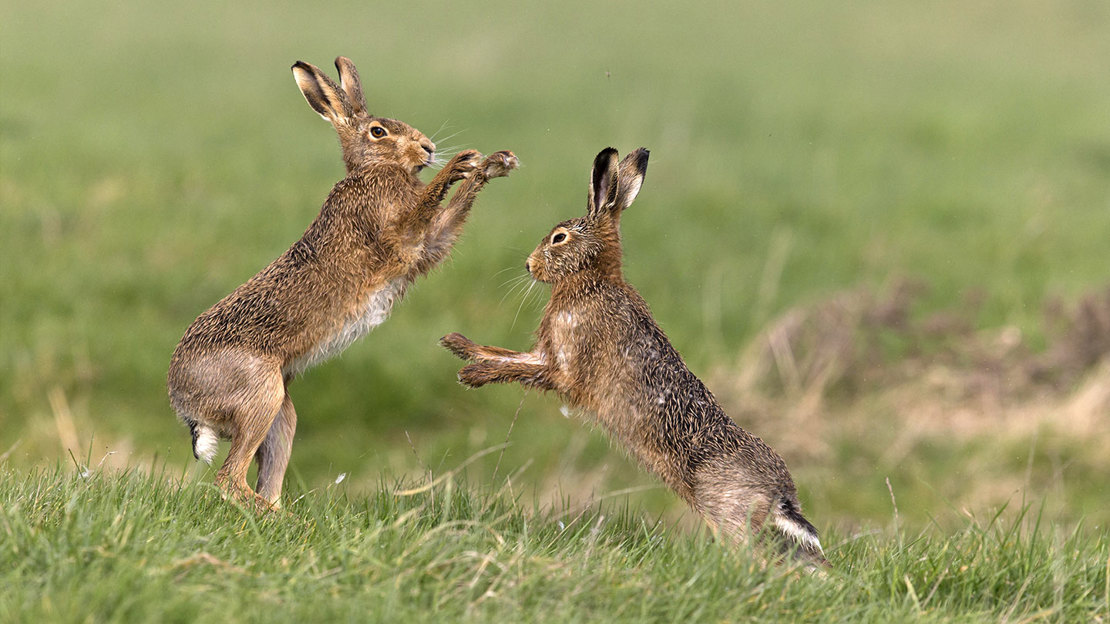
Once a common sight, it is thought that brown hares in the UK have decreased by up to 80% in the last century, largely due to loss of habitat, hunting and changes in agricultural practices.
Why do hares box?
Brown hares are famous for their energetic behaviour, and during the month of March in particular they are known to ‘box’ frantically with one another.
These 'mad March hares' do this because they are in their mating season, with the males (bucks) seeking out any females (does) that have come into season.
The boxing usually occurs when a male is being too persistent with a female, chasing her across fields in an attempt to mate. When she’s had enough, she’ll turn around and try to fend him off in a fierce boxing match! This behaviour can go on for weeks.
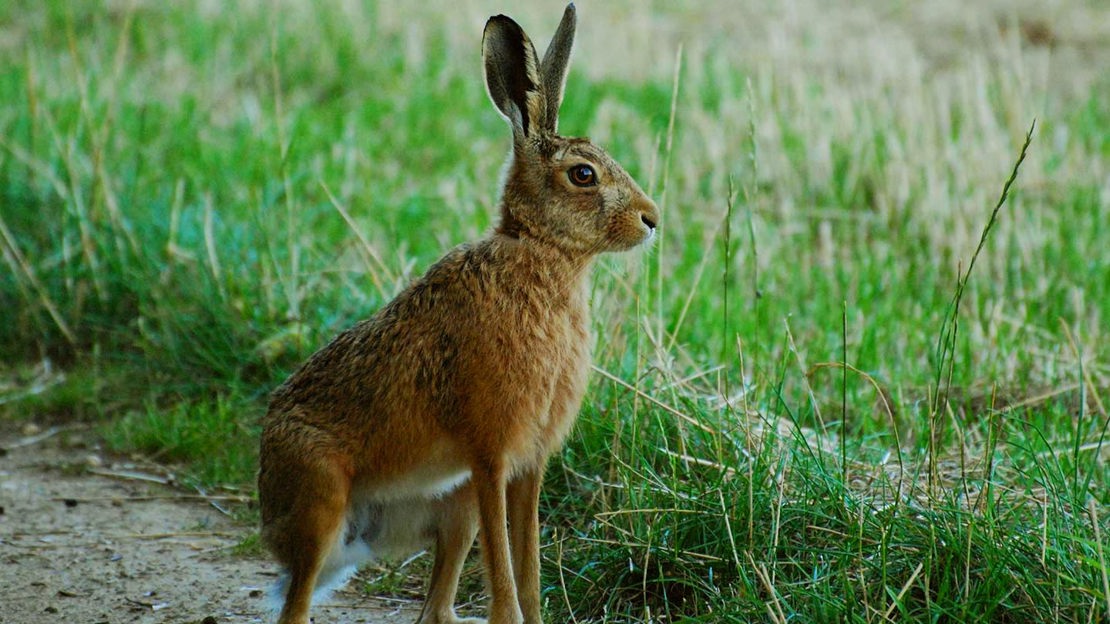
How many types of hare are there in the UK?
There are three types of hare in the UK: brown hare (introduced), mountain hare and Irish hare (both native).
Brown hare (Lepus europaeus)
The brown hare is the hare you're most likely to see in the UK. Originally thought to have been introduced by the Romans, more recent radiocarbon dates for bones found on sites in Hampshire and Hertfordshire suggest brown hares (along with chickens) may have been introduced in the Iron Age.
Look for it on arable farmland and large, flat expanses of grassland. The open plains of Suffolk, Norfolk and Cambridgeshire are a stronghold for brown hares, as are the Marlborough Downs in Wiltshire.
Appearance: golden brown fur, a pale underside and long ears with black tips.
Mountain hare (Lepus timidus)
The mountain hare is native to the Highlands of Scotland but has been introduced to other parts of the UK including the Peak District and on some Scottish Islands including Hoy (Orkney), Mainland (Shetland), Mull and Skye.
Appearance: smaller in size than brown hares with shorter, more rounded ears and shorter legs. They are grey-brown in colour but in winter they develop their iconic white coat.
Irish hare (Lepus timidus hibernicus)
Found only in Ireland and Northern Ireland on undisturbed grassland, the Irish hare is a genetically distinct subspecies of the mountain hare.
Irish hares were once widespread and common, but have been declining since the 1970s. Threats include changes in farming practices, the increased use of farm machinery, high livestock densities and the decrease in the variety of grasses grown on farmland.
On Rathlin Island off the coast of Northern Ireland, there is an isolated population of golden hares that have striking pale blonde fur and bright blue eyes. These are Irish hares with a rare genetic mutation that results in a lack of pigmentation and leads to the distinctive golden colour variation.
Appearance: Irish hares similar in appearance to mountain hares but they're smaller and don't develop a white coat in winter.
When and where to see brown hares
The best time to see hares is at dawn and dusk, out in open fields, farmland and woodland edges.
You are much more likely to see them during early spring, as this is the breeding season. Hares need cover to hide from predators, so can often be found near hedgerows.
As hares have excellent hearing, they are good at detecting potential danger through sound, so it’s worth using a pair of binoculars to observe this mammal without causing a disturbance.
It’s also worth being wary of where you step if you know you are in the presence of hares – some leverets (baby hares) are born as early as March and often appear in fields looking as though they have been abandoned. It’s vital that you don’t touch them - it’s actually fairly common for leverets to be left alone for long periods of time (their mother will come back and check on them intermittently). Touching them will leave your scent on them which may lead to abandonment.
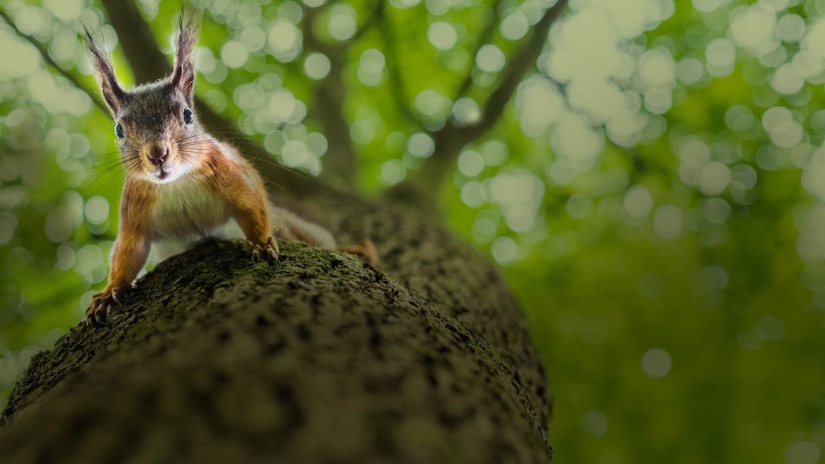
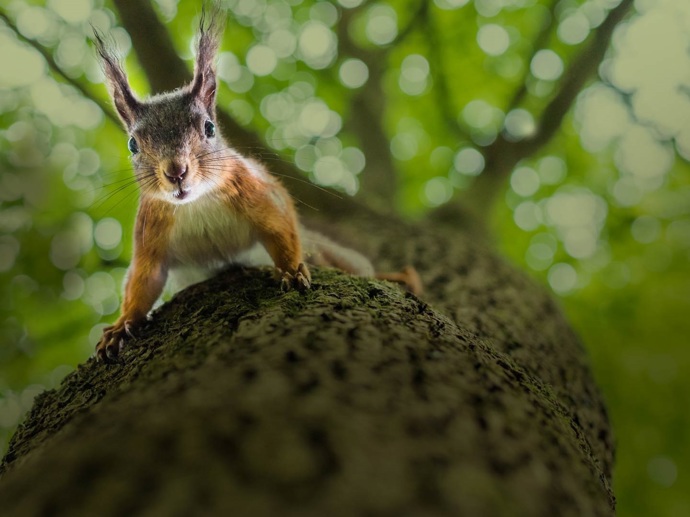
Discover wildlife in a wood near you
Primordial landscapes, breathtaking wildlife and miles and miles of woodland trails. From the countryside to cities, we care for thousands of woods throughout the UK, all free for you to visit.
More wildlife questions
Discover more about British wildlife with answers to our most asked wildlife questions.



